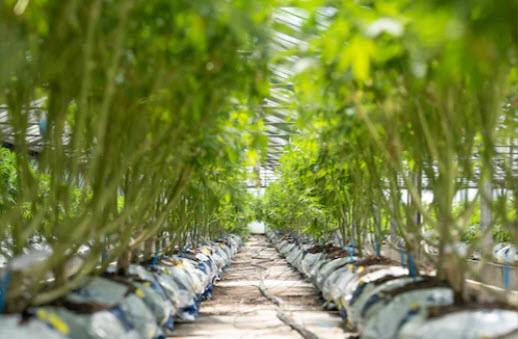As the global revolution that is cannabis normalization moves into its next iteration, there is certainly cause for cheer and celebration, but there are also clear warning signs that are becoming increasingly hard to ignore
Hunger Stones are emerging from the receding waters of Europe’s most important rivers. These are warnings carved into the rocks dating back to the 1500’s and abutting important irrigation and transportation conduits about the immediate impact and coming suffering of severe drought when the water levels get low enough to read said warnings. They are coming to much wider recognition as the continent suffers from what climatologists are calling the worst drought here in 500 years.
Such signs, however, should also be considered a warning for the emerging cannabis industry here about similar dangers dead ahead.
Recreational reform is absolutely a development to be proud of, cheered on, participated in, profited from and a sign that things are not inevitably getting worse. Change for the better is possible.
However, right now, the industry has a few choices to make that will determine the future of the same – including whether it will be sustainable in the long term. Ecologically friendly cultivation is just the start of it. There are many other issues that are now at the forefront of industry development that should be addressed. Course correction is inevitable.
Financing
While it is easy to judge the write-downs of two of the largest names in the industry this summer, it has been a long and rocky path for both Canopy Growth and Tilray. These are firms who were early to market, have made good and bad long-term bets, acted both intelligently and appallingly, and are most certainly bellwether indicators about many issues starting with sustainable finance models and, tied closely to the same, cultivation footprint.
Reverse mergers and early IPOs, stock-heavy, ridiculously priced M&A deals, and attempting to carve a place for themselves in the highly priced segments of the market are all a part of this. So are sources of funds and the ongoing debate about the sustainability and desirability of private vs public company structure.
Cultivation
The issue of cultivation practices and strategy is certainly at the forefront of the discussion – including in Europe. Cultivating and processing in one of the most expensive labor markets in the region (see Denmark) and then shipping such product to places like Poland, is the least of these issues. Tilray, of all the large cannabis companies circling the German cultivation bid took in retrospect what was the smartest short-term step in this regard. They circumvented the process altogether, skipping town to invest in Portugal, and then of course, came back to buy Aphria before performing a corporate write-down. These are certainly tactics that are necessary to survive for this kind of corporate structure. The question remains, however, whether this is the face of the future of the industry.
Finding good places to grow – where the weather is warm, the regulation friendly, export and market entry costs are manageable and labor costs low – is a model that will increasingly establish itself – although there are issues with such models too. The mistakes that Canopy, in particular, made about cultivation are ones that continue to play out across the industry but are increasingly solving themselves with the growth of auxiliary feeder markets in Portugal, but also Greece, Spain, Eastern Europe, Africa, and South America. Cannabis is a commodity, just like any “exotic” fruit.
It is also of course, a controversial topic. This discussion also intersects directly, particularly in Europe right now, over the debate about GMP and indoor vs outdoor cultivation (as well as radiation of crops), as well as sustainable cultivation practices from an environmental perspective.
A Free and Critical Press
This summer, for a variety of reasons, the industry is finally being challenged by a multitude of sources in the press, who are finally having the courage to speak up about serious problems and issues the industry is loath to mention. These include problems that are both industry-wide and company-specific. And further, such voices are being amplified on social media, in particular. That is a good sign.
Generally, however, there has been a rapid consolidation of former media brands as mainstream websites like Forbes and Benzinga promote cannabis-specific niche channels to a more “mainstream” audience. As a result, there has been very little sustained cannabis industry coverage that has maintained a somewhat objective if not informed eye. It is not that it does not exist – but it is rare. This is a trend that will correct – starting with the establishment of this website – for starters.
Threatening journalists, editors, and publications, however, must end now. The only way this industry will thrive is to look at itself critically and adjust accordingly, rather than using the press to place pithy quotes as one is raising money for the next round.
Investors, no matter how big or small should also know that ROI in this industry to date is almost non-existent – and while the only way to look at this industry beyond shorting it, including financially, is to adopt a longer-term vision and accept losses. However, this needs to be better spelled out, including by a media which is still largely too timid, too impressed or does not understand what is going on. Not to mention needs sponsorship to survive.
Patient Access and Consumer Safety
Closely connected to all of the above issues are the repeated problems seen on the regulatory side that directly impact this issue too – although there is certainly hope on the horizon as consumers also seek out sources of information about the products they consume, the companies they hear about – and even more sadly – engage in practices that hurt patients, recreational consumers and even business partners.
Basic due diligence is a part of this. For example, both Canopy Growth and Aurora acquired Canadian firms that used a toxic fungicide on the crops they grew – right as both firms were coming into the German market. This was widely “not mentioned” here at the time. The next wave from North America – specifically the US – will not be spared this critical backlash, particularly as such issues are rampant in the US market too.
Product recalls are not a good look, even if they are “voluntary.” Newsflash that is self-obvious. If a company recalls its products, it is afraid of a) getting sued or b) having to do it anyway when the regulators get involved. There have been too many of these already.
Many of these problems were avoidable, even in the mad rush to market. Due diligence about these issues is a mandatory part of doing business everywhere else and certainly downstream from here. The cannabis industry may still be in its terrible teens, but at this point, it is old enough to take such issues to heart, if not change course, as in yesterday and mature.
While there will inevitably be fewer of these issues on the European side of things because the entire discussion is more regulated, they are still seen here. The CBD market is still a mess. And the entire GMP as well as recreational cannabis debate, along with Novel Food controversies, has yet to play out in a satisfactory way. Not to mention the radiation discussion.
Sustainable Cannabis
Environmental issues are everywhere right now. This includes conversations about whether cannabis cultivation will further threaten already endangered rainforests in Central and South America, to the discussion about labor rates (and where cannabis is sourced). It also includes, particularly in Europe right now, a serious discussion about the environmental sustainability of GMP models. Grow indoors and face large energy costs. Grow outdoors and radiate product. There has to be a middle ground, although one has not been found yet.
Growing in the desert (as in California) endangers critical water tables.
It’s not sustainable for the long term – or even the medium short term.
Lobbying and Political Influence
Inevitably, cannabis firms with money are going to lobby regulators and legislators to protect their interests. However, when such interests collide with any of the above, or, as “the industry” has in too many cases, advocated for the complete elimination of home grow (or elimination to the point of still placing a financial burden on patients), there needs to be an equal force in the room to counterbalance such arguments.
It is not clear at this juncture how that debate is shaping up in Germany – although in a country facing a recession, a drought, an energy crisis, plus unprecedented challenges to its social system, the discussion is going to be very interesting.
Criminalizing patients is on the verge of coming to an end – but fining them for having more than say three plants because their insurer won’t approve their cannabis medicine claims is also a not a good solution, including politically. This is fact, no matter how much big (or even intermediate pot companies) want to preserve their customer base – and further at the highest possible prices.
Poppies are not illegal to grow, anywhere, nor do they require a cultivation license. The reality is that most consumers want to be able to go into a regulated establishment and buy safe products.
Diversity
This is still, overwhelmingly, an industry where opportunity comes first, and most often, to white men of a higher income bracket. Women and minorities, as well as older people with experience in other verticals, are still not widely welcomed, nor promoted, much less supported.
Part of this is the nature of revolutions, which do not stop for political or economic correctness. But part of this is also a choice. A perspective about market entry strategies, staffing, policies, and funding are of course all in the mix.
This is not just a matter of political correctness. It is also a matter of markets. Why should consumers buy from companies that don’t treat their employees well, don’t care about consumer safety, don’t really care about proper regulations, and try to break or bend rules in their favor in ways that are only self-serving and enriching?
Idealism Vs. Corporate Formalization
Many of these conversations were inevitable as the industry established itself, and new markets continue to open. There are also arguments on both sides of many of these conversations that still need to be had.
The reality is that the backbone of this industry is still being built, not to mention sustained, by smaller if not exactly mom and pop enterprises. There are still plenty of opportunities in this industry – and for firms that do it the right way.
Course correction, however, is mandatory at this juncture. Otherwise, there will be inevitable suffering if not weeping along the way – and that includes even the largest firms and best-known brands in the industry.









